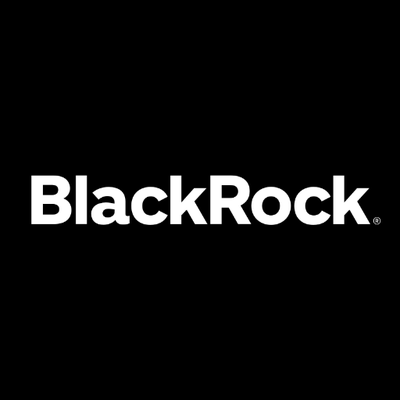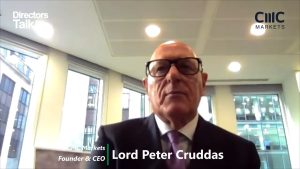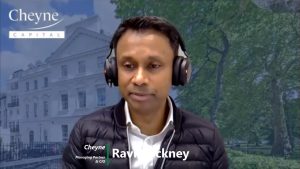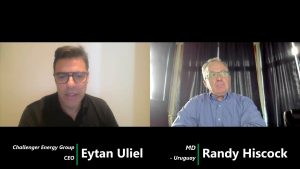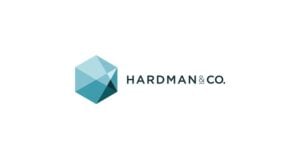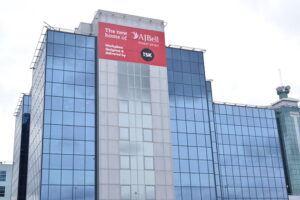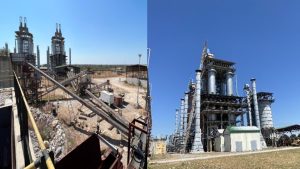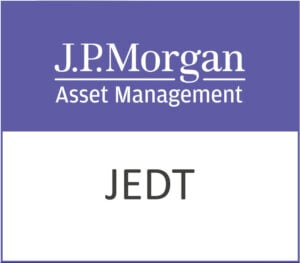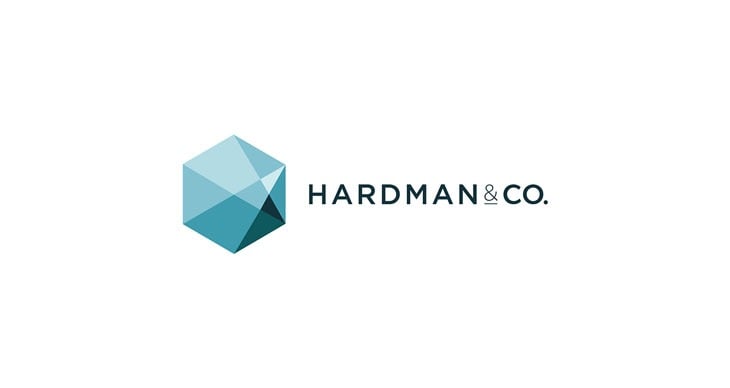BlackRock Smaller Companies Trust plc (LON:BRSC) has anounced its Annual Report and Financial Statements 28 February 2025.
To learn more about the BlackRock Smaller Companies Trust plc please follow this link: blackrock.com/uk/brsc
Performance record
| As at 28 February 2025 | As at 29 February 2024 | |
| Net asset value per ordinary share (debt at par value) (pence)1 | 1,403.45 | 1,450.15 |
| Net asset value per ordinary share (debt at fair value) (pence)1 | 1,463.44 | 1,502.25 |
| Ordinary share price (mid-market) (pence)1 | 1,270.00 | 1,326.00 |
| Deutsche Numis Smaller Companies plus AIM (excluding Investment Companies) Index2 | 16,108.27 | 15,173.40 |
| ========= | ========= | |
| Assets | ||
| Total assets less current liabilities (£’000) | 684,322 | 755,721 |
| Equity shareholders’ funds (£’000)3 | 614,779 | 686,206 |
| Ongoing charges ratio4,5 | 0.8% | 0.8% |
| Dividend yield4 | 3.5% | 3.2% |
| Gearing4 | 13.3% | 11.5% |
| ========= | ========= |
| For the year ended 28 February 2025 | For the year ended 29 February 2024 | |
| Performance (with dividends reinvested) | ||
| Net asset value per ordinary share (debt at par value)2,4 | -0.6% | -4.0% |
| Net asset value per ordinary share (debt at fair value)2,4 | 0.0% | -3.6% |
| Ordinary share price (mid-market)2,4 | -1.4% | -0.8% |
| Deutsche Numis Smaller Companies plus AIM (excluding Investment Companies) Index2,4 | 6.2% | -5.8% |
| ========= | ========= |
| For the year ended 28 February 2025 | For the year ended 29 February 2024 | Change % | |
| Revenue and dividends | |||
| Revenue return per ordinary share | 42.53p | 40.70p | +4.5 |
| Interim dividend per ordinary share | 15.50p | 15.00p | +3.3 |
| Final dividend per ordinary share | 28.50p | 27.00p | +5.6 |
| Total dividends payable and paid | 44.00p | 42.00p | +4.8 |
| ========= | ========= |
1 Without dividends reinvested.
2 Total return basis with dividends reinvested.
3 The change in equity shareholders’ funds represents the portfolio movements, shares repurchased into treasury and dividends paid during the year.
4 Alternative Performance Measure, see Glossary contained within the Annual Report and Financial Statements. Full details setting out how calculations with dividends reinvested are performed are set out in the Glossary contained within the Annual Report and Financial Statements.
5 Ongoing charges ratio calculated as a percentage of average daily net assets and using the management fee and all other operating expenses, excluding finance costs, direct transaction costs, custody transaction charges, VAT recovered, taxation, prior year expenses written back and certain non-recurring items in accordance with AIC guidelines.
Chairman’s Statement
This Annual Report to shareholders to for the year ended 28 February 2025 comes to you at a time of considerable global upheaval, a time of market disruption and economic confusion. Our last financial year was a period of difficulty as well but we had real hope that improved economic performance would lead to a return of investor interest in UK assets and especially smaller companies after a year in which both categories languished and investors focused on a narrow range of areas. Since the beginning of a new US Presidential term and the start of what looks increasingly like a trade war, market volatility has been extreme across all asset classes and geographies. Looking for a clear pathway through the current morass has been a challenge for your Company as it has for many others but there are some positives that deserve highlighting.
Since the start of the Trump Administration the US S&P 500 Index has dropped significantly, a reflection of investor concerns about tariffs, general economic prospects, higher inflation and global stability. The US Dollar has had a period of dramatic weakness as well. At the same time, the FTSE 100 Index has dropped by “only” about 3.4%, Sterling has strengthened versus the US Dollar and flows into UK assets have stabilised. For the first time in quite awhile, investors have started to look at UK assets once again and not just as a source of liquidity. And UK smaller companies have continued to produce good results despite challenging circumstances, underscoring their ability to manage through complicated periods and produce good financial results for shareholders. It will not be an easy period but there does seem to be an underlying sense of change.
Performance
In the year under review, your Company’s net asset value (NAV) per share fell by 0.6% on a total return basis with dividends re-invested compared with the FTSE AIM All-Share Index which fell by 2.6%1, the FTSE 250 Index which rose by 10.1%1 and the FTSE 100 Index which rose by 19.8%1. The wide disparity between index returns reflected changing investor sentiment about large versus smaller cap companies during a period of great market uncertainty over future prospects.
More detail on the significant contributors to and detractors from performance during the year are given in the Investment Manager’s Report below.
The Company’s longer-term performance is set out in the table below. In addition, the chart on page 7 of the Annual Report and Financial Statements illustrates how long-term investors have had an opportunity to build up an attractive annual income from an investment in the Company. Even if the initial dividend yield at the point of purchase has been unremarkable, the strong underlying growth in dividends over the years has resulted in a competitive yield on cost when compared with equity income funds in general. To illustrate this investment and income success, the chart shows that £1,000 invested in the Company on 28 February 2006 would have increased in value by 443.4%1 in NAV terms to 28 February 2025, whereas £1,000 invested in the UK open-ended income sector median would have increased by just 151.6%1. The chart also demonstrates that while the yield on the Company’s shares was much lower at the beginning of the period, over time the Company’s dividend has grown at a much faster rate than open-ended UK income fund competitors.
Returns and dividends
Your Company’s earnings per share have increased by 4.5% year on year to 42.53 pence per share (2024: 40.70 pence per share). This reflects an increase in underlying revenue of 1.9% and the fact that there were fewer shares in issue as a result of share buy back activity (with 3,515,000 shares bought back in the year). Total revenue return for the year was 42.53 pence per share (2024: 40.70 pence per share). The Board continues its policy to ensure the sustainability of dividends and their future growth through investment in companies with strong balance sheets, solid management and sustainable business growth models. Whilst the investment objective is capital growth, the Board remains mindful of the importance of yield to investors. The Board is also cognisant of the benefits of the Company’s investment trust structure which enables it to retain up to 15% of total revenue each year to build up reserves which may be carried forward and used to pay dividends during leaner times. The Company has substantial distributable reserves (£548.3 million as at 28 February 2025, including revenue reserves of £18.5 million). Taking note of your Company’s current reserves, the Board has decided to declare a final dividend of 28.50 pence per share. Combined with the interim dividend of 15.50 pence per share, this represents total dividends declared of 44.00 pence per share for the year to 28 February 2025, an increase of 4.8% over total dividends declared for the year to 29 February 2024. The dividend will be paid on 26 June 2025 to shareholders on the Company’s register as at 16 May 2025. The Board has also taken this decision recognising that many portfolio companies are making strong earnings forecasts for the full year, allowing us to take a more optimistic view of future prospects. Your Company has now increased its annual dividend every year since 2003.
The annualised increase in dividends paid since this date equates to 10.6% and your Company has received the AIC accolade of ‘Dividend Hero’ for its’ consistent growth in dividends for a period in excess of 20 years.
Performance to 28 February 2025 | 1 Year change % | 3 Years change % | 5 Years change % | 10 Years change % | 15 Years change % |
| NAV per share1,2,3 | 0.0 | -16.2 | 5.5 | 108.8 | 411.5 |
| Benchmark1,3,4 | 6.2 | -7.5 | 17.2 | 51.3 | 171.2 |
| Share price1,3 | -1.4 | -17.7 | -2.7 | 96.0 | 487.9 |
1 Percentages in Sterling terms with dividends reinvested.
2 NAV with debt at fair value.
3 Alternative Performance Measure, see Glossary contained within the Annual Report and Financial Statements.
4 Benchmark Index (the Deutsche Numis Smaller Companies plus AIM (excluding Investment Companies) Index).
Gearing and sources of finance
Gearing can play an important role in portfolio performance over time although your Company continues to maintain a very conservative capital structure. The Company has current borrowing facilities of long-term fixed rate funding in the form of a £25 million senior unsecured fixed rate private placement notes issued in May 2017 at a coupon of 2.74% with a 20-year maturity, £20 million senior unsecured fixed rate private placement notes issued in December 2019 at a coupon of 2.41% with a 25-year maturity and £25 million senior unsecured fixed rate private placement notes issued in September 2021 at a coupon of 2.47% with a 25-year maturity. Shorter-term variable rate funding consists of an uncommitted overdraft facility of £60 million with The Bank of New York Mellon (International) Limited with interest charged at SONIA plus 100 basis points (of which £9,230,000 was utilised at the year-end – additional information is set out in note 13 contained within the Annual Report and Financial Statements).
It is the Board’s intention that net gearing will not exceed 15% of the net assets of the Company at the time of the drawdown of the relevant borrowings. Under normal operating conditions it is envisaged that gearing will be within a range of 0%-15% of net assets. At the year end, the Company’s net gearing was 13.3%3 of net assets (2024: 11.5%), well within our target range.
Management of share rating
The Board monitors the Company’s share rating closely, and recognises the importance to shareholders that the price of the Company’s shares do not trade at either a significant premium or discount to the underlying NAV. Therefore, where deemed to be in shareholders’ long-term interests, it may exercise its powers to issue shares or buy back shares with the objective of ensuring that an excessive premium or discount does not arise. As market volatility persisted through the year, discounts across the closed end funds sector remained persistently wide and the Company’s shares traded at a discount to NAV ranging from 5.7% to 14.1% over the year.
During the year, the Company bought back a total of 3,515,000 ordinary shares at a total cost of £47.1 million to be held in treasury. All shares were bought back at a discount to NAV, delivering an uplift to the NAV per share of 0.7% for continuing shareholders for the year under review. The Board believes that the action it has taken has helped to minimise discount volatility, with the Company’s shares trading at an average discount to NAV (with debt at fair value) over the full year of 11.0%, compared to an average discount of 12.4% for the year to 28 February 2025. To put this in context, the average discount for companies in the AIC UK Smaller Companies sector for the same period was 11.5%.
Since the year end, and up to the date of this report, the Company has bought back a further 700,000 shares at a total cost of £8,803,000 (at an average discount to NAV of 12.2%). The Company’s discount currently stands at 12.2% compared to a sector average of 12.1% as at 2 May 2025.
Board composition, implementation of policy on tenure and diversity
In previous Chairman’s Statements, I have noted that the Board has adopted a policy of limiting directors’ tenure to nine years (or twelve years in the case of the Chairman in certain circumstances). The Board remains focused on high standards of governance and is cognisant that the Parker Review in respect of board diversity and the recent changes to the FCA’s Listing Rules set new diversity targets and associated disclosure requirements for UK listed companies. Your Board recognises the benefits of diversity at Board level and believes that Directors should have a mix of different skills, experience, backgrounds, ethnicity, gender and other characteristics. Further information on Board composition can be found in the Corporate Governance Statement contained within the Annual Report and Financial Statements.
Having served on the Board since 2016, including over four years as our Senior Independent Director, Susan Platts-Martin has indicated that she will not seek re-election at the Company’s Annual General Meeting (AGM) on 19 June 2025. The Board wishes to thank Susan for her many years of excellent service and we wish her the best for the future. Her knowledge, sound judgement and calm resolution has benefitted all shareholders. Helen Sinclair will become the Senior Independent Director and James Barnes will become the Chair of the Nomination and Remuneration Committee from the conclusion of the AGM on 19 June 2025.
Agreement with Saba
On 22 January 2025, the Company announced that it had entered into an agreement with Saba Capital Management L.P. (Saba), pursuant to which Saba has given a number of undertakings to the Company regarding its shareholding in the Company, the full announcement can be viewed at the following link: https://www.londonstockexchange.com/news-article/BRSC/agreement-with-saba/16863463. The agreement lasts until the earlier of the day following the completion of the Company’s 2027 AGM or 31 August 2027. The agreement does not limit Saba’s ability to acquire or dispose of shares in the Company. Your Board believes that this agreement was in the long-term interest of shareholders as we continue to invest for their future benefit.
Annual General Meeting
The Company’s AGM will be held in person at the offices of BlackRock at 12 Throgmorton Avenue, London EC2N 2DL on Thursday 19 June 2025 at 11.30 a.m. Details of the business of the meeting are set out in the Notice of Annual General Meeting contained within the Annual Report and Financial Statements. Shareholders are also invited to join Directors for a hot buffet lunch after the formal business of the meeting has concluded. Prior to the formal business of the meeting, our Investment Manager will make a presentation to shareholders. This will be followed by a question and answer session. Shareholders who are unable to attend the meeting in person but who wish to view the portfolio manager’s presentation can do so via a live webinar this year. Details on how to register, together with access details, will be available shortly on the Company’s website at: www.blackrock.com/uk/brsc or by contacting the Company Secretary at cosec@blackrock.com. It is not possible to speak or vote via this medium and it is solely intended to provide shareholders with the ability to watch the portfolio manager’s presentation. Additionally, if you are unable to attend you can exercise your right to vote by proxy or appoint a proxy to attend in your place. Details of how to do this are included on the AGM Proxy Card provided to shareholders with the Annual Report. If you hold your shares through a platform or a nominee company, you will need to contact them directly and ask them to appoint you as a proxy in respect of your shares in order to attend, speak and vote at the AGM. Further information on the business of this year’s AGM can be found in the Notice of the AGM contained within the Annual Report and Financial Statements.
Outlook
Since the financial year end, the Company’s NAV (as at 2 May 2025) has decreased by 0.2%1,2, against an increase in the benchmark of 1.4%1, and the share price has risen by 0.9%1. These results should be seen in the context of continued and significant market volatility fuelled by geo-political risks, which are impacting market volatility, economic growth and investor sentiment.
Even for those of us who have watched markets for a very long time, the current environment represents something new. The post World War II order with all its safeguards and institutional structures is in the process of change at an uncomfortably rapid pace and markets, understandably, are moving erratically in response to successive waves of new information. Against this turbulent backdrop, the Company’s portfolio is weighted towards companies with well capitalised balance sheets and entrepreneurial management teams that are able to rapidly adapt their businesses to the shifting market dynamics. As such we believe your Company is well-positioned and prepared to take advantage of the investment opportunities that lie ahead despite the uncertain market conditions. If shareholders would like to contact me, please write to BlackRock Smaller Companies Trust plc, Dundas House, 20 Brandon Street, Edinburgh EH3 5PP marked for the attention of the Chairman.
RONALD GOULD
Chairman
7 May 2025
1 Percentages in Sterling terms with dividends reinvested.
2 NAV with debt at fair value.
Investment Manager’s Report
Market Review
The world has been so volatile in the last number of years that what appears a reasoned and thought-out summary of the current market can quickly seem dated and redundant. In recent years as I have sat at this desk the world has been grappling with lockdowns, Russian invasions, the end of zero rate interest policies, and the risky spectre of stagflation. We have seen fundamental and profound changes, and for some reason history has picked the period around the Company’s year end as a focal point.
In theory this year is no different. Since 20 January 2025 when the new Trump Administration began to re-write the global economic framework that formed the backbone of our past macro analysis, equity markets around the world have endured massive uncertainty. Since university (sadly longer ago than I care to remember) I have been taught that free trade is good, tariffs and non-tariff barriers bad. Through increased global integration we would drive down costs, increase economic prosperity and living standards globally, whilst at the same time encouraging political integration which would help to promote global stability. Indeed, the economic statistics for the last 70 years bear out those economic theories as living standards have risen and poverty receded in both developed and developing markets. But Trump believes in reciprocity, sees balance of trade as a scorecard, and tariffs as a negotiation tool. It’s too early to judge how the world will respond. Markets, ever the near-term voting gauge, have reacted with fury. Already suffering from a general lack of confidence and clarity the immediate aftermath has seen global equity markets fall, and bonds rally as investors seek safe havens. And herein lies the rub, this year rather than waiting until the last minute to complete the report hoping that some of the uncertainty will clear, I should just admit the summary of the year is uncertainty on a level we have rarely seen, uncertainty that will have profound implications for portfolio construction and returns.
And so, to the year under review. Writing six months ago I expressed a hope the new UK Government could herald an improved outlook for the UK. With the uncertainty and chaos of the previous administration behind us, the return of some “adults to the room” would allow the recovering UK economy to reassert itself on a global basis. Consumers (benefitting from both high employment and real wage growth) would feel confident enough to release some of their savings, and corporates would respond to policy certainty by investing in their products and capacity. Instead, the Labour Government chose a different path. Rather than focus on the positives and encourage this shifting sentiment, it decided to focus on a £22 billion black hole, which has promoted fear and uncertainty and resulted in all investment decisions being put on hold, as well as driving up the consumer savings rate. Labour went on to deliver a budget that to most industry observers was the antithesis of the pre-election rhetoric.
The market is prone to sentiment shifts, everything is black or white, very little sits in the grey. But there is some grey here. One could argue it was politically naïve to head into an election and pledge not to make any changes to the biggest three tax levers a government has (income tax, national insurance and VAT). One can wonder why the new Labour Government didn’t copy the playbook of the previous Labour administration. Instead of “things can only get better” we have “the worst economic inheritance since the Second World War”. But these mistakes have now been made, and with four years left under the current administration, there is plenty of time for lessons to be learned and course shifted.
By nature I’m an optimist, a natural disposition made difficult by markets like these. Our positive view on the UK last year has proven to be incorrect, a direct outcome of which is the underperformance in the second half of the financial year. I will not shy away from this, I know this is frustrating for all investors, myself included, and I will cover this at more length later in the report. But the optimist in me is seeing, at the margin, some things to be optimistic about. From a domestic stance it feels to me the government may have learnt some of the early lessons, and is starting to make real changes. It is no secret the UK has been in the grip of a pervasive regulatory creep for a number of years. Labour has not only realised this, but is making positive endeavours to change things. We have heard from a number of companies that at the margin things are improving. The recent approval of the East Thames Crossing, a project that has been trapped in a planning mire for years shows more than just lip service to planning reform. Equally significant is the change at the head of the CMA, which may suggest a more market friendly disposition in the future.
Outside of the UK a combination of Russia’s aggression and Trump’s indifference have caused profound changes in Europe. Germany has unleashed the shackles of self-imposed fiscal restraints and is leading the charge to significantly increase defence and infrastructure spending. Suddenly European markets are investible again, with early signs of asset allocation away from the US. It can only be seen as a positive that the market focus is at least temporarily shifted away from the “magnificent seven”. Concentration of that level is in no one’s interests and is not a symptom of a healthy market.
And so what of the UK’s position? Some will point to Trump imposing a lower tariff on the UK than Europe as a “Brexit dividend”. On a superficial level this may be the case, but with a significant proportion of UK trade with the US coming from the 25% tariffed automotive sector, it is scant consolation. In truth, as we have so often mentioned, the UK stock market is not the UK economy, and is instead exposed to international revenue streams. But I fear those revenue streams will not be enough to insulate the market from what is to come. Outflows from UK smaller companies have remained significant through the last twelve months, with the only buyers of any note being the companies themselves through record levels of share buybacks. De-equitisation continues at pace, with (at the time of writing) 16 companies already receiving bids this calendar year. The international nature of these UK revenue streams means there is nothing to stop firms following the examples of Ashtead, Ferguson or Smurfit and heading for the promised sunny uplands of a US listing. Something needs to be done to make investing in the UK attractive again and recent events in the US may be starting this shift in attitude. In addition, the Government needs to look long and hard at why companies are struggling with the attractiveness of a London listing. Messing around with IHT rules on AIM is not the solution to this. London retains one of the largest pools of capital and expertise for true small and mid-cap investing, it should be nurtured, not squandered. Perhaps US antics are giving us an extra chance.
Performance Review
And so to last year. At the interim the Company had performed in line with the benchmark. Sadly, the same cannot be said for the second half of the year. Having positioned the Company for a more successful UK Government, and the expectation of a positive inflection in sentiment towards the UK, the budget brought a new reality; rising rates, rising inflation expectations, reducing corporate profitability and cost cutting. We have spent much of the last six months reducing our positive stance on UK domestic stocks, but given the poor market liquidity we have been unable to do so quickly, leading the Company to underperform the index return of 6.2% by -6.2%.
It has been a long time since I have seen such a frustrating performance period, with stock specific issues only explaining a fraction of the underperformance. The rest has come from a series of positions where earnings have been in line with expectations, or indeed in some cases ahead, but share prices have reacted in the other direction.
Starting with the main stock specific drivers. TT Electronics surprised the market with a significant earnings downgrade only a few weeks after reporting numbers and reassuring the city about its outlook. Specific issues at a plant in Mexico appear to be the cause. A brief respite came via an unsolicited approach from Volex, although ultimately this came to nothing. We have exited the position whist we await clarity on any progress in the restructuring plans. Workspace Group is one of a collection of stocks where market sentiment has shifted in response to the budget and rate environment. Like so many in the property sector they trade at a significant discount to net asset value. It is worth noting the property sector has seen significant corporate interest so far this year as investors with longer term horizons look to purchase assets at beneath book cost. Secure Trust shares halved as an investigation into the Motor Finance sector took an unexpected turn. Initially it was felt that SecureTrust’s book of business was outside of the investigation, however a subsequent decision widened the scope. In the face of such extreme regulatory uncertainty and a range of outcomes beyond reasonable analysis we have sold the position. In any year there are always shares that we either don’t own, or don’t own enough of that have a relative impact. This year has seen Zegona Communications (Zegona), TBC Bank, Quilter, Plus500 and Ithaca Energy all rally strongly. Zegona is a relativeunknown in the UK market, with the fundraising that accompanied their purchase of the Vodafone Spain business missing many. We maintained a small exposure to the business, with the highly levered balance sheet and complicated financing structure putting us off having a large holding. The shares doubled during the year. TBC Bank is one of the two main banks in Georgia. Most of the year was uneventful in share price terms, however the possibility of a settlement in Ukraine has seen the shares rally.
The Company has had some successes during the year, although in many cases we feel share prices have not adequately reflected the underlying earnings performance. Top of the leaderboard this year is pension consultancy XPS Pensions (XPS). Earnings have been upgraded a number of times this year partly reflecting the supportive background for the industry, which in the case of XPS has been amplified by a string of impressive client wins. Alfa Financial Software has managed to deliver earnings upgrades whilst at the same time managing the transition of their business from a licence based model to a recurring fee structure, a transition that typically may not run as smoothly as hoped. Demand for Baltic Classified Group’s various services have proven surprisingly immune from the uncertainty so close to their borders, whilst the management team has once again demonstrated not only the pricing power of the underlying services, but also their commitment to wielding that power with restraint. High margins and cash conversion has resulted in both debt reduction and increasing share buybacks.
Activity
With the UK IPO market remaining febrile at best, and outflows leading to a perceived low risk appetite from fund managers, there has been little opportunity to add brand new ideas to the portfolio. Instead, any new additions have either been re-visiting companies that have previously featured in the Company, or looking to re-appraise businesses that have either altered their model, or are more suited to the current economic uncertainty. The largest new addition is pension firm Just Group Plc. Rather like XPS, Just Group Plc are the clear beneficiaries of complex pension markets, and have carved out a niche at the smaller end of schemes which are often unattractive to the larger players in the market. In previous years we have noted how whole industries can change, making the uninvestible finally investible, with the most recent example of this being the construction sector, where a series of very public bankruptcies have changed the pricing dynamics. The food producer sector has previously been one where we have struggled to get comfortable with the business risks. Often small suppliers facing into an industry dominated by a small number of very large customers, poor industry discipline, and often weak balance sheets with legacy pension liabilities stemming from when these firms employed significantly more people. During the course of the year we initiated positions in Premier Foods, Hilton Foods and Greencore Group, all of which we feel have improved opportunities ahead of them, and product sets that produce relatively dependable revenue streams that are attractive in the current market uncertainty. We should make note of the purchase of Raspberry Pi, one of the few IPOs of any note in 2024. Whilst we all hoped the shares would perform strongly and re-ignite the UK IPO market, sadly only half of that came true, although we can all console ourselves with the contribution the shares have made to performance.
In the main disposals this year reflected the continued and prolonged uncertainty the markets are facing. The long-awaited industrial recovery is now even more lengthy, leading to Vesuvius, XP Power and RHI Magnesita all leaving the portfolio. Trainline left the benchmark at the end of 2024, and with uncertainty over Labour’s approach to a UK ticketing app, it feltsensible to move on from a portfolio perspective. The Company didn’t benefit to any great extent from M&A activity this year. In fact, acquisitions have had a negative impact on relative performance as we owned so few of those companies that were bid for. We did however see approaches for Lok & Store and Loungers.
Outlook
It seems fitting to lead into my conclusion via a discussion of mergers and acquisitions (M&A). It is my belief the UK small and mid-cap market is at a critical juncture. Outflows persist, placing continued pressure on share prices and by definition on the valuation of those companies that remain listed. Government policy, particularly with regards to AIM and Inheritance Tax, places further distortions. In light of these pressures, management teams are voting with their feet, either choosing to list somewhere else or delay any capital market activity, whilst would be acquirers are taking advantage of the valuation anomalies the listed market is unable to seize, and purchase companies at very attractive prices. The UK needs a period of stability, enough to make long term investors once again consider the opportunity the UK market offers, and for companies to have confidence that London is a suitable listing venue. The current global political climate may just be the catalyst that starts this process of reassessment (and for those that read my manager commentary last year, investors are desperate for a catalyst).
ROLAND ARNOLD
BLACKROCK INVESTMENT MANAGEMENT (UK) LIMITED
7 May 2025
To learn more about the BlackRock Smaller Companies Trust plc please follow this link: blackrock.com/uk/brsc


